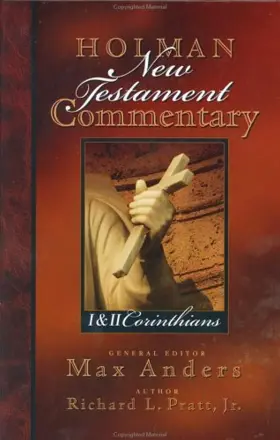

I and II Corinthians
in Holman New Testament Commentary
Pages
449 pages
Publisher
Broadman & Holman
Published
2000
ISBN-13
9780805402070
Collections
This book appears in the following featured collections.
- Essential NT Commentaries for a Preacher's Library by Derek W. H. Thomas
Reviews
I found it very difficult to find a consensus choice for the fifth position. There were several options such as going with what I suspect will be true of the new volume in the Pillar series or going with a classic commentary on the passage. However, these would both be outside of the way I’ve positioned this series.
[Full Review]
A nice blend of exposition, theology, and application.
A nice blend of exposition, theology, and application.
Holman New Testament Commentary, Vol. 7: I and II Corinthians Nashville, TN: Holman Reference, 2000. Pp. vii + 449, Cloth, $19.99, ISBN 0805402071. Mark A. Jennings Hingham, MA 02043 The audience for the Holman commentaries is clear: the church and more specifically the laypersons and layteachers of the church. According to the editor (ix), each Holman commentary is designed to avoid “raising issues scholars usually admit they cannot adequately solve” and to present the Bible in a manner that enhances the ministry of Bible teaching by identifying biblical themes and principles and applying them to contemporary life. Pratt’s commentary follows the same format typical of other Holman commentaries. The commentary is divided into small sections that focus on a key idea. With the key idea as the central point, each of these sections is introduced by a quotation, followed by an “In a Nutshell” summary, then an introductory story, the verse-by-verse analysis, a life-application advisory, a prayer, a “Deeper Discoveries” section, a teaching outline, and, finally, discussion issues. With the exception of the “Deeper Discoveries” section, which sometimes briefly mentions a language-interpretive issue or a first-century cultural context, each of Pratt’s subsections is geared toward instructing the church on how to apply biblical principles. Pratt is sound in his abilities consistently to identify a key idea for each segment and then to utilize the different subsections in a supportive manner so that each passage reaches its crescendo at the “Life Application” section. His treatment of the Lord’s Supper controversy in 1 Cor 11:17-34 serves as an example of this process. Pratt gleans from this passage the importance of how Christians should regard one another. After presenting this key idea in the introductory story, Pratt highlights throughout the verse-by-verse analysis how Paul criticized some of the members of the Corinthian church who participated in the Lord’s Supper with little regard for the poorer church members. Pratt effectively establishes how the Corinthian church’s failure to regard one another correctly leads to Paul’s claims that they were dishonoring Christ and the church. The high point of this analysis is Pratt’s treatment of 1 Cor 11:28-29. He argues that the imperative that every believer “ought to examine oneself” is not, as is often assumed, a reference to an examination of one’s own heart but rather is a command for believers to consider how they treat each other. This discussion prepares the reader for his bold proclamation in the “Life Application” section that the Protestant church’s practice is in error because of its incorrect interpretation of 11:28-29.
[Full Review]


